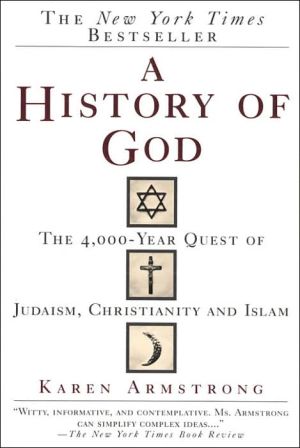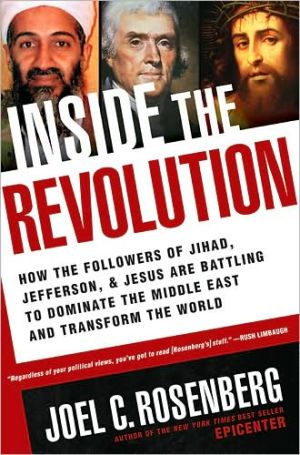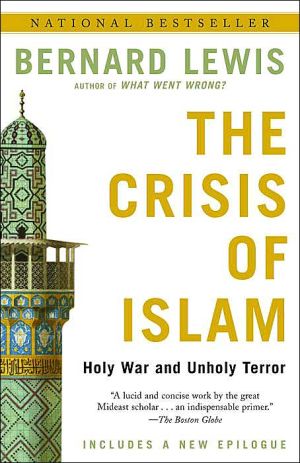Journey of the Jihadist: Inside Muslim Militancy
Renowned Middle Eastern expert Fawaz A. Gerges takes us into the mind-set of the jihadi—or holy warrior—that lies behind so many headlines yet remains nearly impenetrable to us. Using his firsthand knowledge of the "Arab street," he brings to life the stories of Kamal al-Said Habib, a founder of the Jihadist Movement, as well as dozens of other Islamic fundamentalists, as they struggle with the battle being waged for the soul of Islam.\ Journey of the Jihadist puts a human face to events of...
Search in google:
A civil war is being waged among jihadists for the soul of Islam. While all Islamist radicals may share a vision of a purified and unified ummah, or Muslim community, few agree over how to bring it about. Ultra-militant wings, such as Al Qaeda, dominate our thoughts and headlines, for they exported their brand of terrorism to America’s shores and now have carried it into the heart of Iraq. Yet they are in the minority. Most jihadists are struggling, often against great odds and under enormous pressures, to accommodate themselves to gradual social and political change in the Arab world.As Middle Eastern scholar and media commentator Fawaz A. Gerges reveals in this unstinting, deeply personal, and brilliantly illuminating book, we need to know now more than ever who the jihadists are and to listen to what they are saying to each other and the world. Gerges went to Cairo, birthplace of modern Islamist radical thought, and began a dialogue with one of the movement’s founders. Using these conversations as a starting point, Gerges spoke with hundreds of other jihadists throughout the Arab world, tracing the evolution of extremist thought from the 1970s to the present—from the civil war in Lebanon, which Gerges and his family endured, to the war in Iraq that is giving Al Qaeda a new lease on life.The jihadist journey has led through bloodshed and turmoil. It did not begin on September 11th and it will not end in Baghdad. This crucially important and timely book maps the direction jihadism will take in the months and years ahead by showing where—and with whom—it all started. Publishers Weekly In September 2005, Gerges, an academic turned news commentator, published a rare and thoughtful piece of scholarship, The Far Enemy, that sought to map the different views within militant Islam's explosive underworld. Gerges argued nimbly, drawing upon numerous primary sources and firsthand interviews. After traveling across the Middle East and meeting with former jihadists, he learned that Islamic militants often disagreed on critical issues (including whether to attack the United States) and that their movement was far more variegated than Washington's official portrayal suggests. Published less than a year later, this new volume reads like a quicky follow-up. It covers similar ground, draws upon similar sources and is considerably more limited in its scholarly aspirations-although not, perhaps, in its commercial ones. Yet the follow-up may be the better book. Gerges has distilled his ideas to their core and done away with some of The Far Enemy's repetitions. The book's structure is also improved. It's now built around a series of profiles that give focus to each chapter and shed light on how key personalities within the jihadist vanguard see the world. Gerges even devotes time to his own upbringing in war-torn Lebanon, and although the veers into his personal story are not always relevant, they are fascinating in their own right, adding both intimacy and depth to this valuable book. (May) Copyright 2006 Reed Business Information.
Portrait of a Jihadist: The First Generation\ \ \ \ One night in 1999 during Ramadan, Islam’s holiest month, a time of fasting and abstinence, I found myself in Syedeh Zeinab, a historic, run-down, and always crowded neighborhood of Cairo. I was headed for a late-night meeting with a man named Kamal el-Said Habib. I knew him only by reputation. Many of those concerned about events in the Middle East did. He was the former leader of a wing within al-Jihad, “armed struggle,” a paramilitary organization that had played a pivotal role in the assassination of Egyptian President Anwar Sadat in 1981. Al-Jihad’s goals were chillingly straightforward: to decapitate Egypt’s secular state, one of the oldest in the world, and replace it with an Islamic polity based exclusively on shariah, or Islamic religious law. Kamal was a key figure in the first generation of Muslim militants, who in the 1970s had planted the seeds of jihad throughout Muslim lands. If I wanted to locate the starting point of the jihadist movement, I needed to find Kamal el-Said Habib.\ \ My own journey into jihadism thus began on that trip, two years before September 11 and everything that has followed it. “Jihadist” and “jihadism” had not quite yet entered the vocabulary of ordinary Americans, but I was determined to find out more about what was happening outside of most Western perspectives. However, once I had finally managed to arrange a meeting with Kamal, his friends and associates cautioned me. The man I would encounter, they said, was no longer the firebrand who once had dedicated his life to turning the world upside down. He and his generation had learned the hard way what happened when you tried to Islamize society through force. The bloodshed that had resulted was horrific; there were executions and lengthy prison sentences (Kamal had spent ten years in an Egyptian prison); families were destroyed. He and other former “warriors of God,” had now, I was told, reassessed their old ways. They were charting a new course, one committed not to violent revolution but to political persuasion and da’wa, or religious calling. They were older now. They were wiser.\ \ What I hoped to learn from Kamal was how deeply this reinvention had taken hold. I found myself fascinated by his story, for it seemed simultaneously a reflection of and contradiction of what was happening in the Arab world. \ Kamal was born to a lower-middle-class family in Deemshalt, a large village with a population of thirty thousand located in Markaz Dikranis, in the Daqahlyya province in the Nile delta, sixty or so miles north of Cairo. His father traded in agricultural products, catering to the needs of the villagers who depended on seasonal agriculture for their livings. Kamal graduated from Cairo University in 1979 at the top of his class, with a degree in political science. Of his nine brothers and sisters, Kamal’s future seemed the most assured. Charismatic and ambitious, he could have trained to become an academic, a writer, or a lawyer, rising above the comfortable though fairly modest standard of living of his parents and grandparents. But neither money nor the allure of ascending the ladder in jahili, “un-Islamic,” institutions appealed to him. When he was called up for military service, he rejected the rank of a junior officer, preferring to remain a simple soldier. His goal was to replace jahiliya with hakimiya, “God’s sovereignty,” to bring an end to Egypt’s moral and social decline.\ \ By the time he graduated, Kamal and other Islamic activists were prepared to rise up in arms against kufr, “unbelief,” and from the late 1970s until the end of the 1990s they waged an all-out struggle. They saw themselves as a vanguard that would restore Islam as a complete way of life. Thanks to Kamal’s al-Jihad, renamed Tanzim al-Jihad, and al-Jama’a al-Islamiya, the largest jihadist organization in the Muslim world, a devastating war took place inside Egypt between 1992 and 1997. Though little recognized by the outside world, it caused billions of dollars in damage to the economy and resulted in thousands of deaths. By the end of the 1990s the war was over; the Egyptian government had won. Security services in Egypt and Algeria had killed as many as ten thousand militants. Tens of thousands more were imprisoned, their families and sympathizers fired from their jobs and denied even the most minimal social support. Their mosques, bookstores, publishing offices, and papers had been closed. Most conceded defeat and declared a unilateral “ceasefire,” a code word for surrender. Throughout the 1990s Kamal was a voice of moderation, calling on his brethren and former colleagues to lay down their arms and negotiate with the local authorities.\ \ A determined minority chose to keep fighting. But rather than continue their resistance against the entrenched Arab governments, Ayman Zawahiri, Osama bin Laden’s deputy, took the fight outside Egypt. Bin Laden and Zawahiri declared war against the world’s last remaining superpower, the United States, and its allies, focusing upon the “the head of the snake,” the “Great Satan” itself, with the hope of resurrecting militant jihadism among the rank and file. Bin Laden’s Al Qaeda was therefore at odds with Kamal and with the great majority of jihadists, who had by then rejected violence as a means of gaining political power. The jihadist civil war had started, one that would spread throughout the Muslim world and determine the future of the entire movement.\ It is not by happenstance that it all started in Egypt. With seventy million people the most populous Arab state and the Muslim world’s cultural and intellectual epicenter, Egypt was the birthplace of the modern jihadist movement, and remains to this day the best place to understand its complexities and locate its fault lines. The movement’s founding fathers were almost entirely Egyptian, as were the authors of many of its defining documents. At its height, al-Jama’a al-Islamiya’s membership was estimated to be in the tens of thousands. Along with Zawahiri, Egyptians—Abu Ubaidah al-Banshiri and Mohammed Atef (also known as Abu Hafs al-Masri)—had founded Al Qaeda with bin Laden. Al Qaeda’s shura, “ruling council,” which constituted bin Laden’s inner circle, was dominated by Egyptians, who supplied organizational skills and military expertise.\ \ Egypt is also home to the first mainstream Islamist organization, Ikhwan al-Muslimun, the Muslim Brotherhood, founded in 1928 by Hassan al-Banna, a school teacher turned ideologue. Initially, al-Banna, whose outlook was permeated with the teachings of Sufism—a philosophical, mystical, and inner-directed school of Muslim thought—intended the Brotherhood to be a youth organization aimed at moral and social reform through education and propaganda. However, it soon evolved into the largest political opposition group in Egypt. Al-Banna, a student of Rashid Rida, a well-known early-twentieth century Egyptian Islamic reformer, called for the revival and reformation of Islam and the restoration of broken links between tradition and modernity. In 1940 he defined the Brotherhood’s mission in the broadest possible terms as embracing “a Salafiya message, a Sunni way, and a Sufi truth,” and saw it as “a political organization, an athletic group, a scientific and cultural union, an economic enterprise, and a social idea.” At the heart of al-Banna’s vision was the belief in moral regeneration as a stepping stone to Islamizing state and society—in other words, it would occur from the bottom up rather than the top down, which Islamists and jihadists favor. His approach to Islamic revival was grassroots in nature and philosophy.\ \ By the end of World War II, however, al-Banna’s original vision had been dramatically transformed; the Brotherhood carried out attacks against the British military and aggressively campaigned against social and political injustice at home. In 1948 it joined the Palestinians in the war against Israel and distinguished itself on the battlefield. A number of Egyptian officers, including two future presidents, Gamal Abdul Nasser and Anwar Sadat, developed their ideology during the Palestine war and established informal links with the Brotherhood, whose anti-imperial stance won it public sympathy and support. By the end of the 1940s, the Brotherhood had developed a formidable political machine, and thought to have almost a million members.\ \ The Brotherhood’s ambitions swelled with its ranks. Some elements flirted with violence, establishing al-Jihaz al-Sirri, “secret apparatus,” an underground paramilitary unit within the political wing. The Egyptian government decided things had gone too far. In December 1948 it banned the Brotherhood, accusing it of being involved in the death of Prime Minister Mahmud Fahmi Nokrashi. On February 12, 1949, al-Banna himself was shot while getting into a taxi and died a few minutes later in a nearby hospital. Later, evidence surfaced that suggested that his assassination had been planned, or at the very least condoned, by the government. The murder of the moderate al-Banna radicalized the Islamist movement and set the stage for more violence and bloodshed. Many of the subsequent activists, including the spiritual father of modern jihadism, Sayyid Qutb, emerged from under the cloak of the new radicalized Brotherhood. Thus, directly and indirectly, the Brotherhood also shaped Kamal and his generation.\ \ Beginning in the early 1970s, the Brotherhood—with branches in the Middle East and in Central, South, and Southeast Asia—moved more and more into the political mainstream, renouncing force or the threat of force to attain its goals. It has stayed more or less on that path, seeking to participate in the process as a legitimate opposition party, though often excluded from political participation by the ruling autocrats. “We live in a very repressive atmosphere,” said Mohammed Habib, the Brotherhood’s second in command. “We are keen to form our own political party. The regime won’t allow us,” he told the New York Times in August 2005. A few months later, during the November parliamentary elections, Habib sounded a little more hopeful. “These elections are different from the previous ones, where there was a large degree of repression, confinement, and pursuit, and up to 6,000 of us were imprisoned.” For the first time, the Egyptian government allowed the Brotherhood, which remains banned, to take a more prominent role in promoting the candidates it endorses. In the November 2005 parliamentary elections, the Brotherhood even put women on their ticket, a dramatic move for a patriarchal Islamist organization, even a mainstream one.\ Copyright © 2006 by Fawaz Gerges\ \ All rights reserved. No part of this publication may be reproduced or transmitted in any form or by any means, electronic or mechanical,\ including photocopy, recording, or any information storage and retrieval system, without permission in writing from the publisher.\ \ Requests for permission to make copies of any part of the work should be mailed to the following address: Permissions Department,\ Harcourt, Inc., 6277 Sea Harbor Drive, Orlando, Florida 32887-6777.
ContentsPrologue 1Portrait of a Jihadist: The First Generation 19Things Fall Apart 61The Warriors of God: The Second Generation 93The Great Satan, Near and Far 143Under Middle Eastern Eyes 183Jihad Diaspora 231Afterword 273Notes 278Glossary 285Selected Bibliography 288Acknowledgments 293Index 295
\ Publishers WeeklyIn September 2005, Gerges, an academic turned news commentator, published a rare and thoughtful piece of scholarship, The Far Enemy, that sought to map the different views within militant Islam's explosive underworld. Gerges argued nimbly, drawing upon numerous primary sources and firsthand interviews. After traveling across the Middle East and meeting with former jihadists, he learned that Islamic militants often disagreed on critical issues (including whether to attack the United States) and that their movement was far more variegated than Washington's official portrayal suggests. Published less than a year later, this new volume reads like a quicky follow-up. It covers similar ground, draws upon similar sources and is considerably more limited in its scholarly aspirations-although not, perhaps, in its commercial ones. Yet the follow-up may be the better book. Gerges has distilled his ideas to their core and done away with some of The Far Enemy's repetitions. The book's structure is also improved. It's now built around a series of profiles that give focus to each chapter and shed light on how key personalities within the jihadist vanguard see the world. Gerges even devotes time to his own upbringing in war-torn Lebanon, and although the veers into his personal story are not always relevant, they are fascinating in their own right, adding both intimacy and depth to this valuable book. (May) Copyright 2006 Reed Business Information.\ \ \ \ \ Library JournalIn this fascinating and highly informative account of the development of militant Islamist praxis and ideology in the contemporary Middle East, Gerges (Middle Eastern studies, Sarah Lawrence Coll.; The Far Enemy: Why Jihad Went Global) explains what the jihadists are about and what they intend to accomplish. In addition to relying on a number of primary Arabic sources, the author has interviewed several jihadists, most importantly Kamal al-Said Habib, who founded the Jihadist Movement. Gerges, born and raised a Christian in Lebanon, demonstrates remarkable objectivity in explaining the world as seen from the vantage point of Muslim militants. He is especially revealing when analyzing the pivotal role of Sayyid Qutb, the mid-20th-century Egyptian Islamic writer and educator, in the thinking of the contemporary jihadists. The author's ability to explain complex issues in a jargon-free and easy-flowing narrative makes this book one of the best, most useful, and most timely volumes for nonspecialist readers. Highly recommended for public and academic libraries. [See Prepub Alert, LJ 1/06.]-Nader Entessar, Spring Hill Coll., Mobile, AL Copyright 2006 Reed Business Information.\ \ \ Kirkus ReviewsWhat's Osama so upset about? Well, there's the Great Satan business, of course. But, reveals political commentator and historian Gerges, there's at least one other compelling reason. The big news in this newsworthy book is just this: By Gerges's account, following Saddam Hussein's invasion of Kuwait, Osama bin Laden approached the Saudi royal family with a proposal: "He would mount a force of 100,000 trained mujahedeen to enter Kuwait and expel the Iraqis." The Americans lobbied hard for the Saudis to turn down the offer and allow half a million U.S. troops inside the country, and in any event, the royal family knew that jihadist rage was directed at them, and so they refused, leading bin Laden to put America "at the top of his list of enemies" overnight. Gerges outlines three militant trajectories. For the first post-Nasser generation, Israel, as always, was the greatest enemy of the Arab world; that generation's crucible was Lebanon, where Israeli soldiers and Lebanese Christian militias committed sufficient atrocities to serve as recruiting posters for militant groups such as Hizbollah and al-Fatah. For the second generation, which Gerges likens to "the young Abraham Lincoln volunteers of the 1930s, heading off to defend democratic Spain," or even the Contras whom Reagan so lavishly praised and supported, the crucible was Afghanistan, the enemy the Soviet Union. American money and arms created al-Qaeda in that fight. And, Gerges writes, al-Qaeda enjoyed only the tiniest support in the Islamic world, was effectively ejected from Somalia and other Arabic nations and was never so close to the Taliban as Western intelligence sources claimed. But then came the American invasion of Iraq in2003, and there, Gerges writes, with haunted knowledge, came the third crucible, pitting fundamentalists against fundamentalists and elevating the pariah to hero. Memorable, nondogmatic and full of fresh insights-none of them comforting for anyone who hopes for an end to the so-called Long War.\ \








